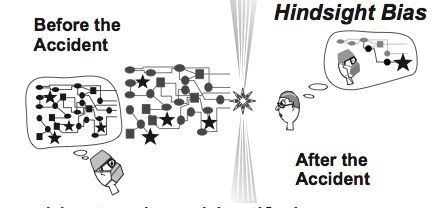Match making is at the heart of most middleman functions. The buyer and seller work thru the middleman to improve the chance of closing a transactions. Both sides reveal information to the match maker who then puzzles out if a deal can be closed.
The negotiation literature is full of examples where the negotiations fail, in spite of the existence of a deal to be had, because the two parties reveal information along a path that leads to a lousy outcome. The simplest example is negotiating over price. The rule of thumb is that once each side has bid a price the only possible outcome, short of a great deal of negotiation, is to split the difference. The rub here is that each party has a space of acceptable deals and the challenge of the negotiation is to both discover if they overlap and then give that find a good point to close on. But the moment one side reveals anything about his space of acceptable outcomes the other side will adjust what he reveals.
The following illustration is taken from a paper that suggests a way, using cryptography, that two parties might check if they have found common ground without actually revealing anything about the ground that is acceptable to them. The paper frames the match making as a romantic problem (Romantic Cryptography (pdf) in the Journal of Craptology). The two sides want to know if they love each other without revealing their love.
The balance beam below tries to solve this problem. The players place tokens on the right side. These tokens are identical to the eye, but are either light or heavy. In the drawing the heavy tokens have a dot shown in their center. A player who loves the other player places a heavy token on the scale. Once both players have placed their tokens a pin is removed and if the scale falls they both love each other.

You could use this in price negotiations. You using a spinner to suggest a price and then both sides play a round; repeating until a mutually acceptable price is discovered. It could also be used to make all kinds of self revealing games; say with a deck of cards that ask questions.
Of course in this story the device, the scale, is acting as the middleman. The paper sketches out how to do this kind of thing with cryptography.
I wonder if there is a simple way to cobble together a scale and tokens like this out of stuff likely to be lying about. The need does arise. Say for example when a team wants to know if they all think it’s time to cancel the project, delay the release, switch database engines, fire the project manager, hire this guy, …
The paper goes on to describe variation on the technique using transparencies.

Each player is provided with two transparencies, a yes and no vote, that look similar the ones above. If the two yes votes are overlaid you get a heart. Otherwise you get nothing. The first approach requires some carefully made tokens and scale that works just os. This technique requires preparing the transparencies for each round; but they can be manufactured before hand into a deck for use during the negotiation. It’s fun to note that a similar technique can be used so the players can distinguish if which of their cards are yes or no.
They point out that there is a problem with lying. If the game reveals both sides love each other it’s still a problem that they might say “Oh, just kidding!” Placing a bond or playing the game in a group can help to put a price on that behavior. There is somewhat different problem that raising a question reveals a lot, as in the example “Do you think we should fire Bob?” Some of that can be addressed by creating a swarm of random but oft raised questions.

